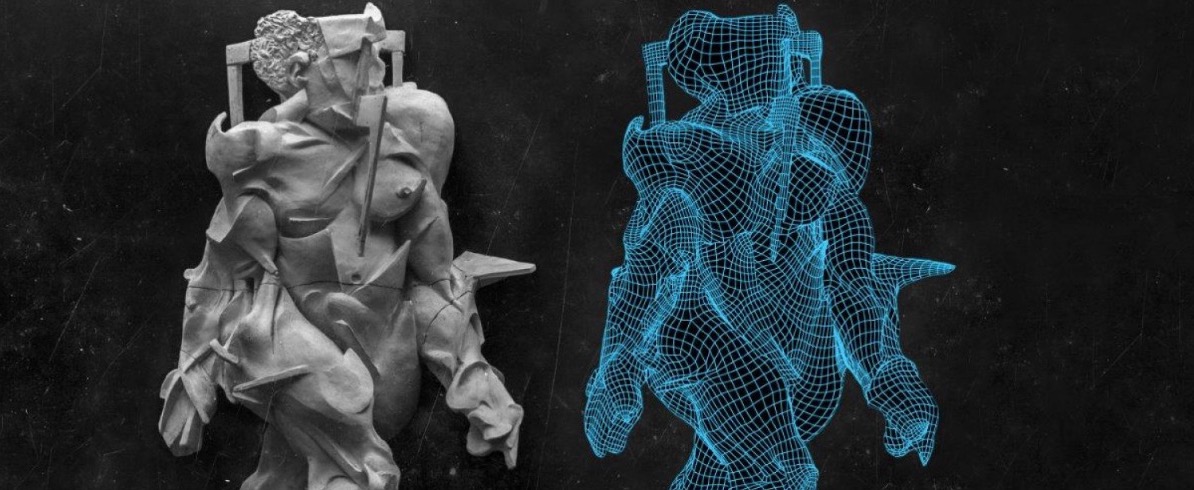The destruction, in 1927, of a number of plaster and mixed-media sculptures by the Futurist artist Umberto Boccioni (1882-1916) was a tragic loss for avant-garde art. Of the many ground-breaking sculptures he created between c.1913 and 1915, only a handful remain in existence today. Now, using a combination of vintage photographic material and cutting-edge 3D printing techniques, digital artists Matt Smith and Anders Rådén have recreated four of Boccioni’s destroyed works: a volumetric study of a human face titled Empty and Full Abstracts of a Head, and three of the artist’s iconic striding figures. This ground-breaking display will enable modern audiences to ‘see’ these lost masterpieces for the very first time.
Boccioni’s interest in sculpture developed during the early part of 1912. He wrote: “Recently, I am obsessed with sculpture! I believe I have seen the means of achieving a complete renewal of this mummified art.” Later that year he published his ‘Technical Manifesto of Futurist Sculpture’, in which he called for the rejection of conventional materials such as marble and bronze. His best-known sculptures were created in a single material (plaster) and focused on the problem of how to capture movement in a static image – one of the key concerns of early Futurist art. However, his approach differed markedly from that of his fellow Futurists by seeking to convey a fluid, intuitive experience of movement. Boccioni’s best-known three-dimensional work is Unique Forms of Continuity in Space, the original plaster version of which belongs to the University of São Paulo’s Museum of Contemporary Art. One of the most instantly recognisable of all modernist sculptures, it appears on the Italian 20c coin. Dating from 1913, the work represents an aerodynamic figure – part man, part machine – racing energetically towards the brave new world envisioned by the Futurist movement. It was preceded by three sculptures on the same theme: Synthesis of Human Dynamism, Speeding Muscles and Spiral Expansion of Muscles in Movement. Until now, all that remained of these earlier works were a number of photographs taken in Boccioni’s studio and at three exhibitions around the world from 1913 to 1917. Careful study and comparison of these images has now enabled the creation of highly accurate 3D reconstructions of the original works, which were entrusted to a sculptor named Piero da Verona following the artist’s death, who subsequently disposed of them.
In addition to the full-size 3D prints, the exhibition will feature smaller maquettes highlighting those areas where Rådén and Smith had to compensate for a lack of photographic documentation, drawing on the insights they had gained into Boccioni’s stylistic vocabulary in order to complete their reconstructions of the works. Time-lapse recordings of the printing and digital sculpting processes will also be included, as will a number of sketches and working drawings for the final prints.
| Duration | 25 September 2019 - 22 December 2019 |
| Times | Wednesday to Saturday 11.00 - 18.00 Sunday 12.00 - 17.00 Closed Mondays and Tuesdays. |
| Cost | £7.50, Concessions £5.50 National Art Pass £3.75 Free to school children and full time students with valid NUS ID card. Admission to café and shop free. |
| Venue | Estorick Collection |
| Address | 39a Canonbury Square, London, N1 2AN |
| Contact | 020 7704 9522 / info@estorickcollection.com / www.estorickcollection.com |

